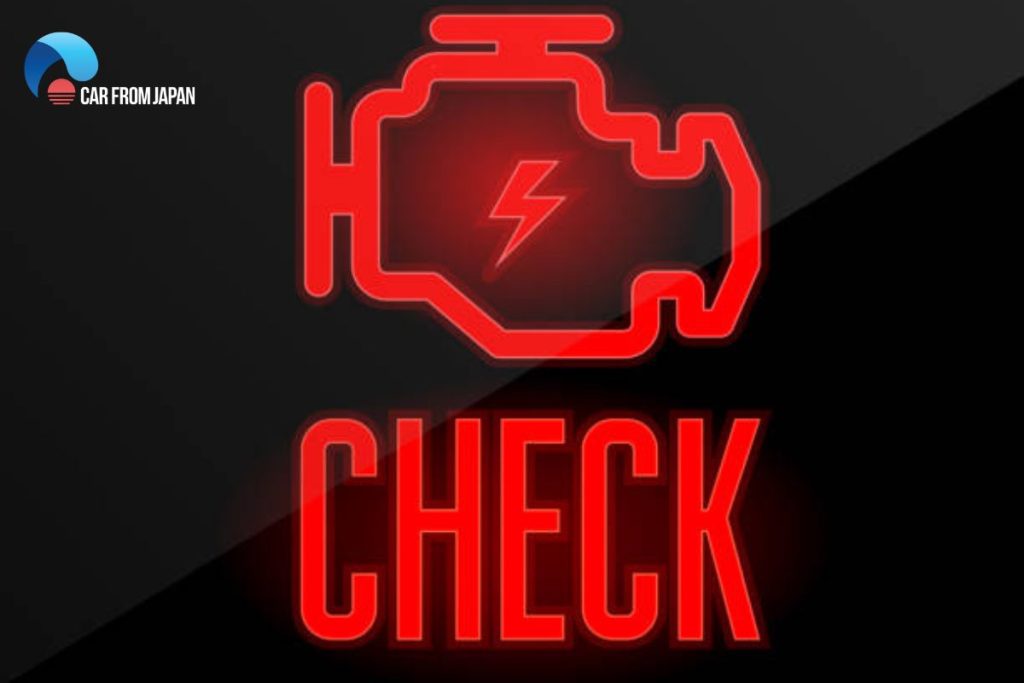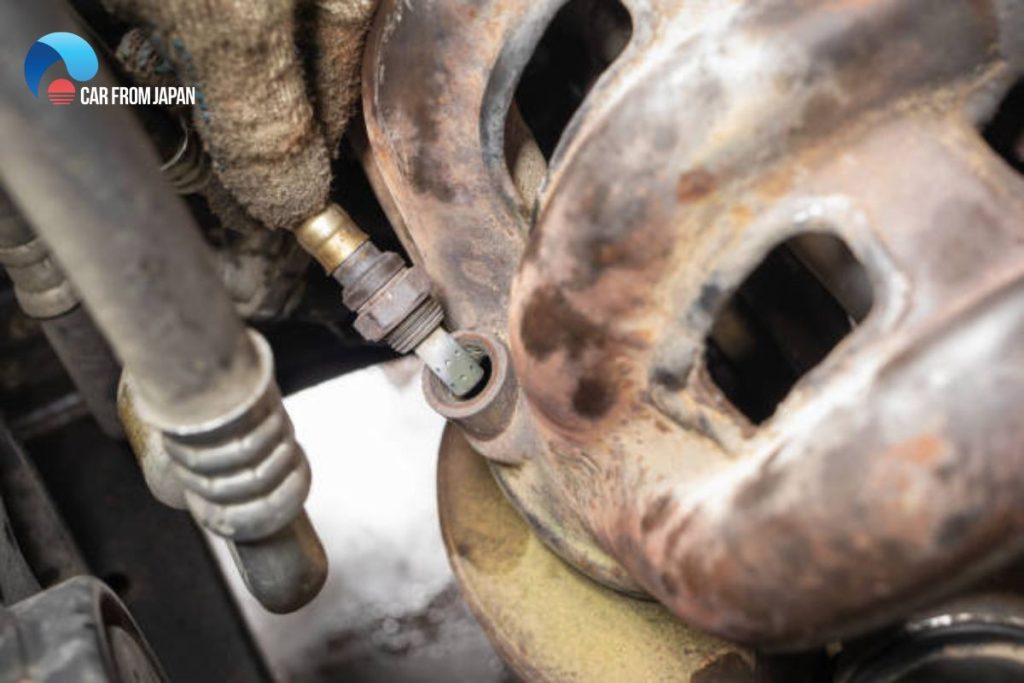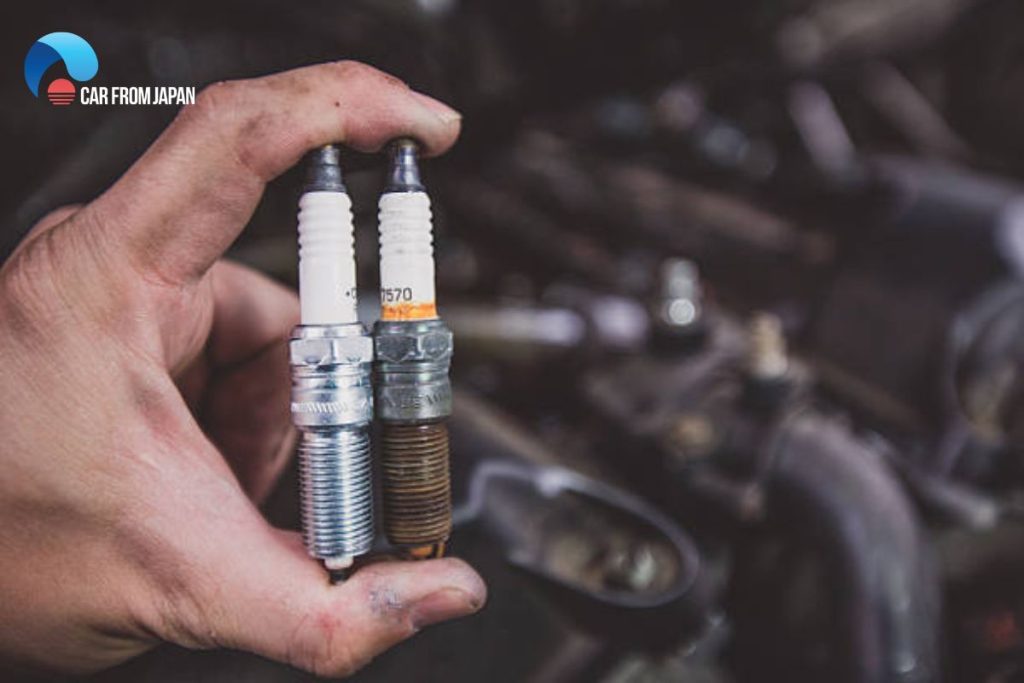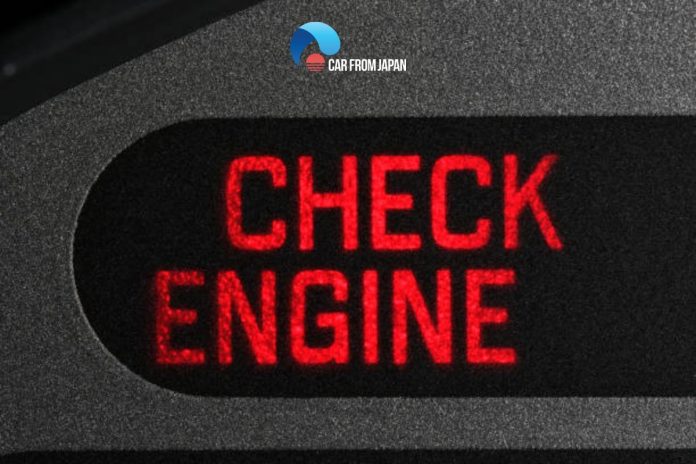A flashing check engine light is a serious warning, but what does it mean when it flashes, then stops, while you’re driving? This intermittent behavior can make you unsettled, so what are the potential causes of the check engine light flashing then stops, and how to address the issue effectively? Let’s explore everything in this article:
Contents
- What Does It Mean When Check Engine Light Flashing Then Stops?
- 8 Reasons That Make Check Engine Light Flashing Then Stops While Driving
- Check Engine Light Flashing Then Stops: Why It Requires Immediate Attention.
- Solutions For Check Engine Light Blinking Then Stops
- Meaning Of The Warning Colors Of The Check Engine Light
- FAQs
- Closing Thoughts
What Does It Mean When Check Engine Light Flashing Then Stops?
A check engine light is a warning light when your engine or related parts have an error. Check Engine lights are usually located in the instrument cluster behind the steering wheel. When ECM detects that the data from the sensor is different from the normal value or loses the signal, the Check Engine light will turn on to notify the driver.
When the “check engine” light is on, it either stays on continuously or it will flash and off. This can give motorists an uneasy feeling or even a feeling of panic. A check engine light is probably the most misunderstood indicator on the dashboard because it doesn’t tell you specifically what’s wrong with your car.

However, if you see the check engine light flashing on and turning off after that. The most popular reason the check engine light goes off can be that you touched or clicked the reset button after going off with your key.
But if not like that, this means your vehicle is in a dangerous condition and you should pull the car over to the side of the road as soon as possible. You need to turn off your car and have it towed to a trustworthy mechanic to make necessary repairs.
Flashing the check engine light is so dangerous because it means your engine has a serious misfire condition. Or there’s something seriously wrong with either the ignition fuel timing or compressor…To know more details about the causes of a check engine light blinking and then stops, let’s move to the next part us.
8 Reasons That Make Check Engine Light Flashing Then Stops While Driving
It could be any of these numerous causes to the blinking check engine light then stops. Just look at 8 common reasons below:
Faulty oxygen sensor
An oxygen sensor in the car is an electronic device that measures the residual oxygen concentration in the exhaust gas of the car, to help the engine adjust the appropriate level of fuel injection. This helps to ensure operational performance while strictly complying with emission standards.
If the oxygen sensor is not working properly, it can increase fuel consumption by up to 30%. When the Oxygen sensor malfunctions, the information is wrong, and the combustion process will no longer be effective, so the vehicle often has to consume more fuel to compensate.
Therefore, when the check engine light flashing, it is likely that the oxygen sensor has failed. There are two reasons why this sensor does not work or the measurement is incorrect:
- The wire is broken
- Due to the quality of gasoline mixed with a high concentration of ethanol, it exceeds the allowable standard.
The only way to rectify a faulty oxygen sensor is to replace it with a new one. This should be done as soon as possible because delays can cause the catalytic converter to burst.

The gas cap is open or not tight
Simply as may it sound, a loose gas cap can cause the check engine light to come on and turn itself off. A gas cap plays an important role as it prevents fuel vapors from leaking.
Normally, if the fuel tank cap is tightly closed, the pressure in the fuel tank will reach the optimal level and the sensor will measure that pressure. However, in some cases, if your tank cap is open or the rubber ring is scratched, then the sensor system also detects and reports an engine failure.
How do you fix or repair a loose gas cap? When you receive codes pointing to a faulty cap then you need to physically inspect this component to see whether it perfectly fits or not.
Bad catalytic converter
Do you know that If your car was to operate without a catalytic converter, you would have harmful gasses that include carbon monoxide? The catalytic converter is responsible for treating harmful components in the exhaust gas before being released into the environment. If the catalytic converter fails, the car will also turn on the check engine indicator light.
To clear this warning light, you can fix it or have to replace it with a new one. The unpleasant part is the cost, you may have to part with up $2000 to get a new catalytic converter.
Defective mass air flow sensor
If your check engine flashing then stops, you could be facing a problem of a faulty mass airflow sensor. A MAF sensor plays a crucial role in measuring the flow of intake air entering the engine, transmitting the signal to the ECM to calculate and adjust the appropriate amount of fuel and ignition timing.
However, when operating for a long time, this sensor is also susceptible to dust and dirt, making the transmitted information incorrect, and affecting the entire system. Therefore, if it detects that the intake air flow sensor is faulty, the Check Engine light icon will light up to notify.
Relay stuck or damaged air filter valve
During engine operation, gasoline will be vaporized without this filter valve system. All that gasoline vapor will escape into the environment. This valve is responsible for recovering gasoline vapor and then passing it through a filter and injecting the vapor mixture into the combustion chamber. Therefore, gasoline vapor will not be lost to help the engine operate more optimally and save more fuel.
If this valve is faulty or damaged, the vehicle will report an engine error and only a specialized checker can detect whether this valve is damaged or not. A new gas cap is incredibly affordable.
Damaged spark plugs

The error of the Check Engine light flashing is usually caused by a spark plug malfunction such as a dirty spark plug, a damaged spark plug connector, or a damaged high-voltage wire. These errors can cause the spark plugs to emit weak sparks or at the wrong time, greatly affect the combustion of the gas and fuel mixture. This will reduce engine efficiency, causing vibration, car jerks when accelerating, difficulty starting, car stalling…
Broken thermostat valve
The thermostat valve is responsible for regulating the circulation of coolant to cool the engine. The thermostatic valve helps ensure a cooling temperature of 80 – 95 degrees Celsius for the engine to operate optimally.
However, for a long time, the valve can also have problems such as being stuck. This will affect the cooling effect, causing the engine to overheat. If not handled soon, your engine will have serious problems. When the ECM detects that the thermostat is faulty, your dashboard will show the Check Engine light.
Faulty EGR system
The exhaust gas recirculation (EGR) system is responsible for bringing the exhaust gas back into the intake air to reduce the NOx concentration. After a long time of working, the exhaust gas recirculation control valve or this pipeline system may be clogged due to dirt and soot. At this time, you will see that the check engine will blink and then stop.
It can be said that this check-engine light is a complex indicator light, involving many systems on the vehicle. If you are not sure when diagnosing the reasons. You should take the car to a reputable car dealer and garage to accurately check and correct the error that the car encounters to avoid losing money.
Check Engine Light Flashing Then Stops: Why It Requires Immediate Attention.
Driving a car with a flashing check engine light will cause unburned fuel to be dumped into the exhaust system. And more seriously it will make your vehicle catch on fire. When the Check Engine light is on, if the vehicle has minor problems, the engine can still operate normally.
However, you should not be subjective because if you do not fix it soon. The condition of the car error can become more serious. Because the operation of the engine is a combination of many parts.
If one part fails, the chain can affect many other parts. At this time, for the best safety, the driver should only let the vehicle operate at a speed range of less than 40 km/h. Then take the car to the garage to check the error immediately.
In case the Check Engine light is blinking continuously. This is a sign that there is an emergency, the engine may be overheating. Continuing to drive can seriously damage the vehicle’s operating system. Therefore, it is best at this time to find a safe place to stop the car and tow your car to a trustworthy mechanic to check.
Solutions For Check Engine Light Blinking Then Stops
In any situation, when your check engine light is flashing. You will need a diagnostic scanner to try and fix the problem yourself. Currently, on the market, there are also many types of car error readers at cheap, compact, and convenient prices.
You can equip yourself with one if you want to check the car yourself. Otherwise, if you don’t have this tool, you can take your car to an auto part store which will normally perform this service for free.
When the engine check light flickers, the cause of the flickering check engine light phenomenon. Which may be the exhaust gas caused by the spark plugs, the ignition coil, and thermostats. In this case, you need to quickly clean the spark plugs, and sensors, and replace the fuel pump for the car.
Note: You should not arbitrarily clear the check engine light by unplugging the power source, this can be dangerous if you are inexperienced in battery removal.
In some cases, the light blinks when performing this method, but the error is not completely fixed, but only temporary. The best way is to bring the car to the garage with a diagnostic machine or fault scanner to identify the correct error and repair it in time.
Meaning Of The Warning Colors Of The Check Engine Light
When the Engine warning light is on, depending on the colors displayed on your car dashboard. We can determine the danger level of the error, thereby giving the next steps promptly:
Check engine light is on yellow:
This is a warning color. With this indicator light, you do not have to worry too much when driving in the car if the engine has no abnormal noise. The exhaust is not black and has a strange smell, and the fuel consumption does not increase abnormally.
Inspect for simple parts that can be checked, such as the gas tank cap. If the check engine light is still on, then take the car to the nearest reputable garage. So that you can check exactly where this yellow light error comes from and handle that.
The indicator light is on red:
This is a warning that your car is in a dangerous situation. As soon as this warning signal lights up, you absolutely must not continue driving. If you do not stop the vehicle in time, other parts of the vehicle will be damaged. At that time, you should call the company’s technical staff to check and handle the error.
FAQs
How long can you drive with a blinking engine light then?
A flashing check engine light is never a good sign. It’s your car’s way of screaming for attention, signaling a serious problem that requires immediate action. Ignoring this warning and continuing to drive could lead to significant and costly damage to your vehicle.
Can I diagnose the problem myself?
While you can use an OBD-II scanner to read the diagnostic trouble codes (DTCs) stored in your car’s computer, interpreting these codes and diagnosing the problem accurately requires expertise. It’s best to consult a qualified mechanic for a proper diagnosis.
Which is worse flashing or solid check engine light?
While a solid check engine light may allow for short-term driving, a flashing light demands immediate attention and minimal driving.
Closing Thoughts
Above is the possible and detailed information about the causes and remedies when the check engine light is blinking and then stops. From a bad O2 sensor to damaged spark plugs or a faulty EGR system, they can be the reasons making your checking engine flash then stop.
With these summaries, we hope that you will be confident and calm. When handling problems related to errors they are warned by the check-engine light to control the vehicle in safe traffic. We hope you always have an enjoyable experience with your car! Keep reading and don’t forget to follow the next article.



